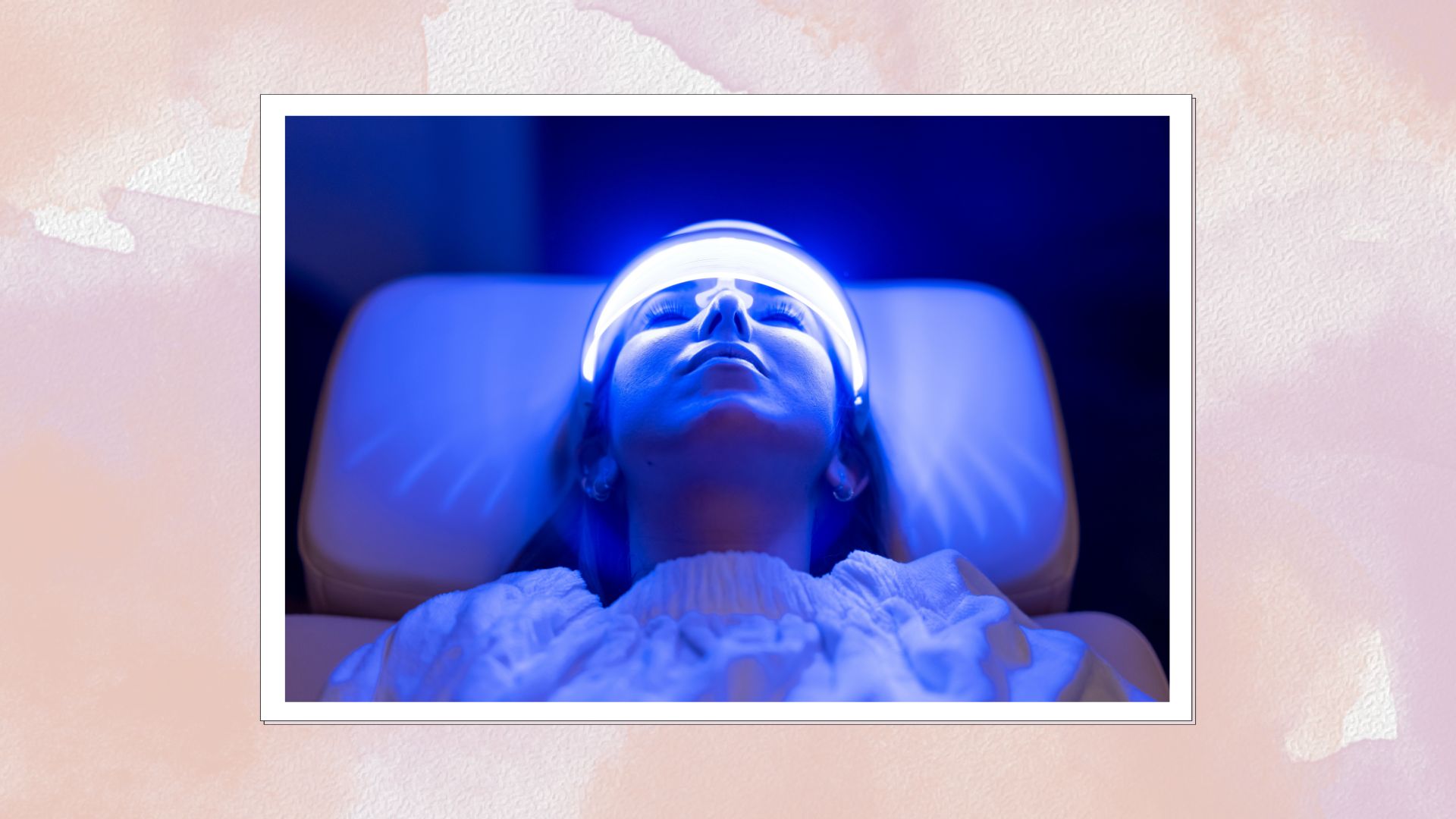
A-listers swear by them, but do LED face masks work? Designed to stimulate the production of collagen and tackle the visible signs of ageing, these futuristic-looking gadgets promise to improve the overall look of your skin – hence why they’ve become so popular. But with a hefty price tag attached (we’re talking a couple hundred pounds or more), we want to know if they’re really worthy of investment.
Despite the gadgets’ skin-boosting claims, recent research published in The Times suggests that the light produced by LED face masks can only travel as far as the outer layer of the skin and thus, cannot support the production of collagen. It’s worth noting, however, that this study was commissioned by Lyma – a brand who make low-level laser therapy devices – and argue that this is the only tech that can penetrate deep into the dermis.
“Certainly, at-home devices don’t quite match the potency of in-clinic treatments, but their cumulative effects can still be remarkable—especially when incorporated as part of a regular skincare routine,” assures Debbie Thomas, London-based facialist who’s known for her laser expertise. Ahead, we break down the science behind the tech and round-up our go-to gadgets, including the best red light therapy device.
Do LED face masks work? Experts reveal all...
Do LED face masks work?
Victoria Beckham, Jennifer Anniston and Chrissy Teigen are all reported fans – but is there any science to back up the popular skincare devices’ claims? “LED masks are far from the latest fleeting beauty gadget; they’re rooted in science, with red and blue light therapies particularly well-documented,” Thomas tells us. Red light boosts circulation, encourages cellular renewal, and reduces inflammation, while blue light is a powerful ally in combating acne-causing bacteria.
Not exactly new, “light therapy has been used for over 30 years to heal the skin and stimulate collagen and elastin,” says Dr Maryam Zamani, oculoplastic surgeon, facial aesthetics doctor and founder of MZ SKIN. Originally developed by NASA to help with tissue healing and repair in space, “LED treatment is now offered as an acne, wrinkle reducing and cellular repair treatment in-clinics.”
In short, LED face masks do work – but, as Thomas says, with realistic expectations. “Think of them as your daily skin maintenance, rather than a one-stop miracle.” The results are cumulative, meaning you won’t see a big difference after just one treatment.
What is LED light therapy?
LED light therapy operates on the principle that specific wavelengths of light can penetrate the skin at various depths, stimulating biological processes. “The skin’s receptors absorb these wavelengths, which in turn activate cellular regeneration, boost collagen production, and—in the case of blue light—neutralise acne-causing bacteria,” explains Thomas.
“In essence, LED is like giving your skin cells a mini workout, encouraging them to perform at their peak, from enhanced healing to firmer, more resilient skin,” she continues. And while it can be incorporated into your skincare regime, Dr Zamani points out that it is “incredibly efficacious in helping heal skin after in-office procedures, such as peels, lasers, micro-needling, PRP as well as post facial surgery.”
What are the differences in LED colours?
Each LED colour delivers a bespoke benefit, as Thomas breaks down below:
- Red light (the darling of anti-aging aficionados) works at a deeper level, encouraging collagen production and improving skin elasticity, leaving a plumper, more youthful complexion in its wake.
- Blue light is the go-to for those prone to breakouts, as it expertly targets the bacteria responsible for acne, helping to keep skin clear.
- Yellow light energises the skin’s outer layers, often used to tackle redness, while green light is said to even out skin tone and pigmentation. Though less widely researched, they remain popular in some beauty circles.
How do at-home devices differ to those used in-clinic?
“In-clinic LED treatments offer professional-grade results, thanks to more powerful devices capable of delivering faster, more dramatic improvements,” says Thomas. But the beauty of at-home masks lies in their convenience. “At-home LED devices are an excellent way to bring a normally in-clinic treatment to the comfort of your home,” agrees Zamani. And while not as potent as their clinic counterparts, they can be used daily – allowing you to build a cumulative effect over time. “It’s skincare at your own pace, that fits seamlessly into your lifestyle,” adds Thomas.
3 of our favourite LED face masks to shop now
RRP: £750
This powerful LED mask delivers impressive results with its comfortable design that wraps around the face for optimum light coverage and efficiency. Choose between two settings: Red + Infrared (to boost collagen and plump up skin), or Red + Blue (to tackle blemishes and promote luminosity). While it's expensive, this is a must-try if you’re serious about healthy, clearer-looking skin.
RRP: £465
If you’re short on time and after a ‘quick fix’, give this Dr Dennis Gross LED mask a whirl. Each treatment session is just three minutes long, meaning the red, blue or red-blue lights get to work quickly. Expect a clearer, more radiant complexion in a matter of weeks. We’re hooked!
RRP: £239
FDA-cleared and clinically proven, the BondiBody LED Light Therapy Mask boasts 132 LED bulbs that emit four different infrared light settings (yellow, red, purple and blue) to help reduce dark spots, scars, breakouts and boost collagen production. It's well worth the money if you’re going to use it regularly.







